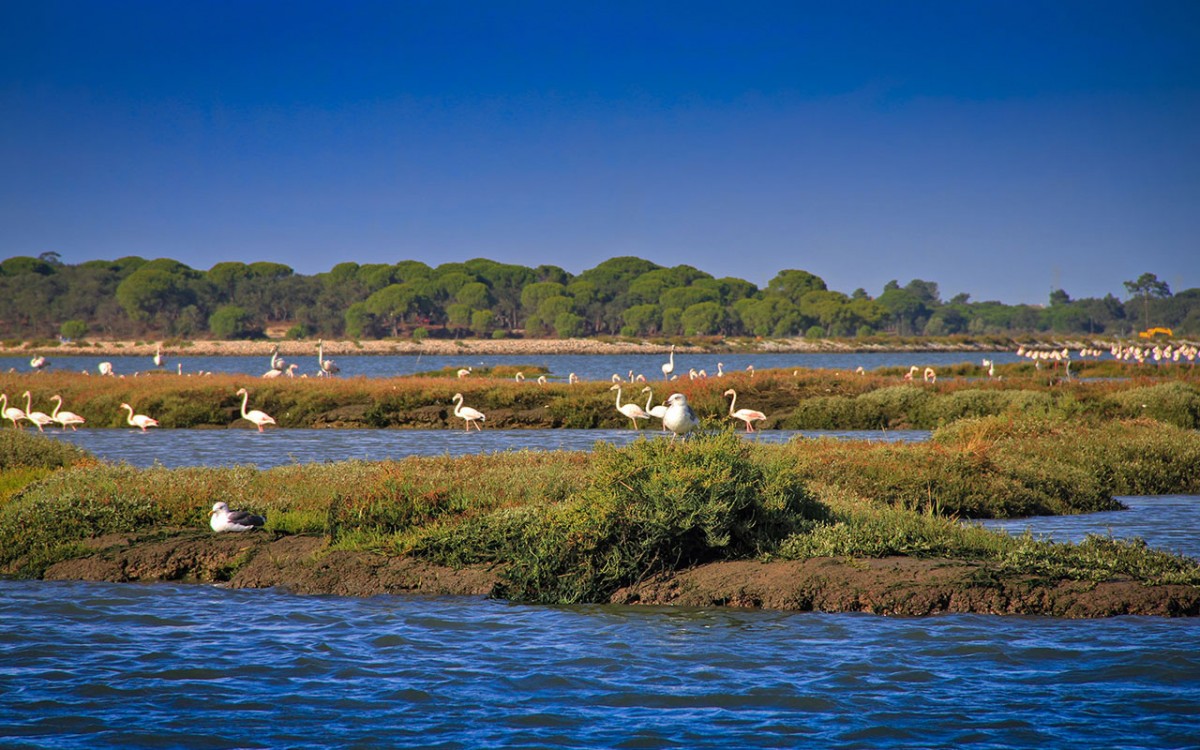
The River Sado is born in the Serra da Vigia, near Beja, and winds its way across the plains of the Alentejo, travelling 180 km north until they flow into the sea near Setúbal. The river’s estuary commences close to Alcácer do Sal, a highly fertile humid zone, where the landscape is marked by rice fields, cultivated in platforms, and nests of white storks, perched on top of church towers or electricity pylons. This elegant bird always chooses the highest places in order to build its nests and is one or 200 bird species that inhabit the Sado Estuary, which has been declared a Nature Reserve and a zone of special protection in order to protect the species.
The most friendly local inhabitants and symbol of the Nature Reserve are the dolphins. It’s rare to find them in Europe, freely swimming in their natural habitat, but there is an important colony of dolphins in the River Sado, who are known locally as “roazes-corvineiros” (gnawers of corvine fishing nets), because they gnaw at fishing nets and primarily eat corvina sea fish. Don’t miss the opportunity to go on a boat trip and observe several examples of these playful mammals.
The protected area has great natural riches that man can use to his benefit, including cork oak groves from which cork is extracted, pine groves, whose pinenuts are transformed by skilled hands into highly appreciated regional desserts, and the now defunct salt pans, which were of great economic importance over many centuries.
The fish salting tanks that can be seen in Tróia, in the Roman ruins, vestiges of an ancient production practice. With white sand dunes and tranquil waters, Tróia is an excellent beach resort that may be used as a starting point in order to discover this beautiful region.